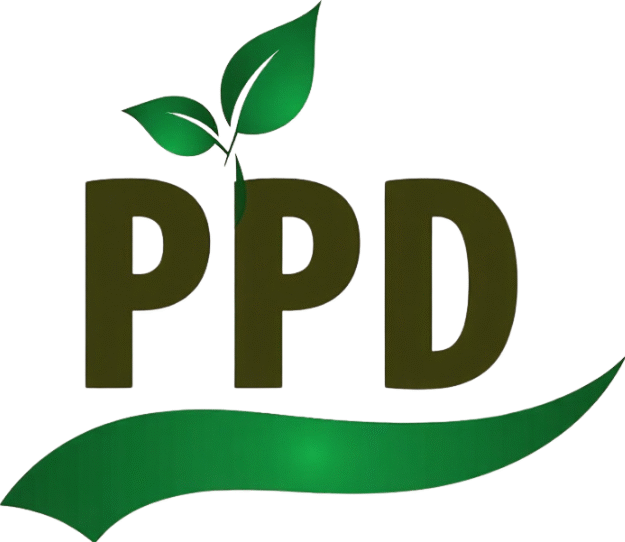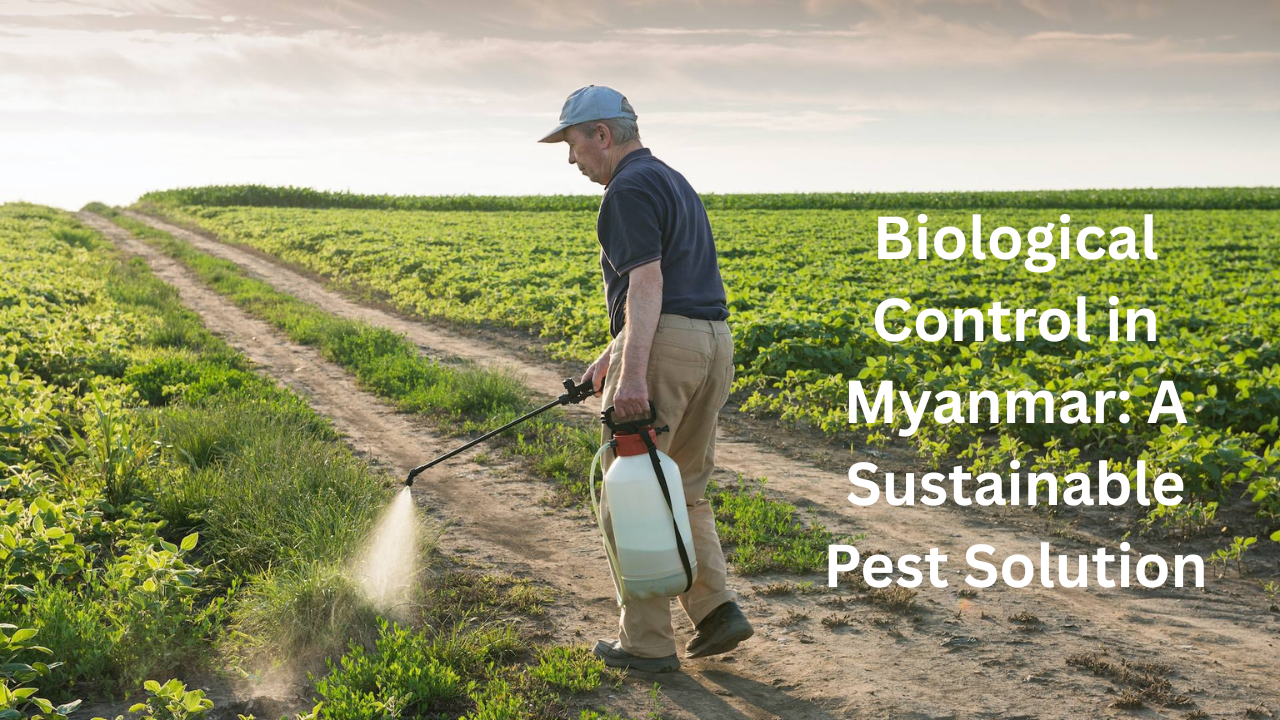
As Myanmar continues to build a sustainable agricultural future, one method is gaining momentum for its ecological, economic, and long-term impact — biological control. Unlike chemical pesticides, which often pose risks to the environment, human health, and beneficial species, biological control uses natural enemies like predators, parasites, and pathogens to manage harmful pests. This method is emerging as a game-changing solution in Myanmar’s journey toward sustainable and climate-resilient agriculture.
In this article, we explore how biological control is being applied across Myanmar, which pests are targeted, and what the future holds for this green approach.
What Is Biological Control?
Biological control (or biocontrol) is the use of living organisms to reduce populations of pests and diseases. These natural enemies may include:
- Predators (e.g., lady beetles, lacewings),
- Parasitoids (e.g., tiny wasps that lay eggs inside pest larvae),
- Pathogens (e.g., fungi, bacteria, and viruses).
Biocontrol can be classified into:
- Classical Biological Control – Introduction of exotic natural enemies.
- Augmentative Biological Control – Mass-rearing and release of biocontrol agents.
- Conservation Biological Control – Enhancing the habitat to support existing beneficial species.
Why Myanmar Needs Biological Control
Myanmar’s reliance on agriculture makes pest control essential, but traditional chemical-based methods have led to:
- Pesticide resistance,
- Environmental contamination,
- Decline in pollinators and beneficial insects,
- Increased input costs for farmers.
Biological control offers a sustainable alternative, particularly important in:
- Rice and horticultural crops,
- Organic and agroecological systems,
- Areas with pesticide misuse or overuse.
Key Biological Control Programs in Myanmar
1. Trichogramma Wasps for Rice and Corn Borers
- Application: Tiny wasps parasitize the eggs of rice stem borers and maize borers.
- Method: Wasps are mass-produced in biological control labs and released in infested fields.
- Impact: Reduced chemical pesticide use by up to 50% in pilot areas of Bago and Mandalay regions.
2. Beauveria bassiana Fungi for Whiteflies and Thrips
- Application: Fungal spores infect and kill soft-bodied insects like whiteflies, thrips, and aphids.
- Use: Common in vegetable farms, especially in Shan and Nay Pyi Taw regions.
- Result: Significant pest population suppression without affecting pollinators.
3. Predatory Beetles for Aphid Control
- Species Used: Lady beetles and rove beetles.
- Method: Habitat management (flowering strips, reduced pesticide zones) encourages natural predator populations.
- Benefit: Farmer cost savings and ecological balance.
4. Neem-Based Biopesticides
- Though not a classical biocontrol agent, neem extract supports biological systems by deterring pests without harming beneficial insects.
- Locally produced neem formulations are now promoted in organic farming communities.
Overview Table: Biological Control in Myanmar
| Biocontrol Agent | Target Pest | Application Method | Region Used | Outcome/Benefit |
|---|---|---|---|---|
| Trichogramma Wasps | Stem borers (rice, maize) | Egg parasitoid release | Bago, Mandalay | Reduced pest outbreaks, lower pesticide use |
| Beauveria bassiana | Whiteflies, thrips | Foliar spray | Shan, Nay Pyi Taw | Environment-friendly pest suppression |
| Lady Beetles | Aphids, scale insects | Conservation through habitat support | Southern Myanmar | Improved yield, fewer pesticide sprays |
| Neem-Based Biopesticide | General insect deterrent | Spray or soil application | Organic zones | Low toxicity, preserves beneficials |
| Bacillus thuringiensis (Bt) | Caterpillars, leaf folders | Spray formulation | Central Dry Zone | Target-specific action, safe for crops |
Institutional and Farmer Support
Several agencies are supporting biological control in Myanmar:
- Plant Protection Division (PPD), MOALI: Runs biocontrol labs and extension campaigns.
- Yezin Agricultural University: Researches compatibility of biocontrol with cropping systems.
- International Organizations (FAO, IRRI): Provide training, materials, and pilot projects.
- Private Sector: Local agri-entrepreneurs are beginning to commercialize biocontrol products.
Benefits of Biological Control for Myanmar
- Environmental Protection
- Reduces chemical runoff into waterways and soil.
- Preserves biodiversity in farming landscapes.
- Economic Viability
- Lowers input costs for smallholder farmers.
- Provides business opportunities through local biocontrol production.
- Sustainable Yield Improvement
- Encourages crop health through long-term pest balance.
- Reduces secondary pest outbreaks often triggered by pesticides.
- Compliance with Export Standards
- Helps meet residue-free export requirements for high-value markets like the EU and Japan.
Challenges and Limitations
Despite its promise, biological control in Myanmar faces several hurdles:
- Limited Production Facilities: Few biocontrol agent rearing labs exist outside major cities.
- Low Farmer Awareness: Many smallholders still rely on chemical sprays due to lack of information.
- Short Shelf Life of Agents: Some biocontrol organisms have limited storage stability, complicating distribution.
- Policy Gaps: Weak regulation and quality control of commercial biocontrol products.
Strategic Recommendations
To scale biological control in Myanmar, the following steps are essential:
- Expand Biocontrol Production Units: Decentralized, farmer-managed units can serve rural areas.
- Integrate into IPM Programs: Biological control should be a core part of Integrated Pest Management (IPM).
- Train Extension Workers: Field-level educators must understand and promote natural enemy conservation.
- Develop Standards and Registration: Quality control of biopesticides and biocontrol agents must be enforced.
- Link Farmers with Eco-Friendly Input Suppliers: Strengthen distribution networks of bio-based inputs.
Three One-Line FAQs
Q1: What is biological control in agriculture?
It’s the use of natural enemies like predators, parasites, and pathogens to control crop pests sustainably.
Q2: Which biocontrol agents are used in Myanmar?
Common ones include Trichogramma wasps, Beauveria bassiana fungi, lady beetles, and neem-based sprays.
Q3: Why is biological control important for Myanmar’s future?
It supports eco-friendly farming, reduces pesticide use, and helps farmers meet global market standards.

